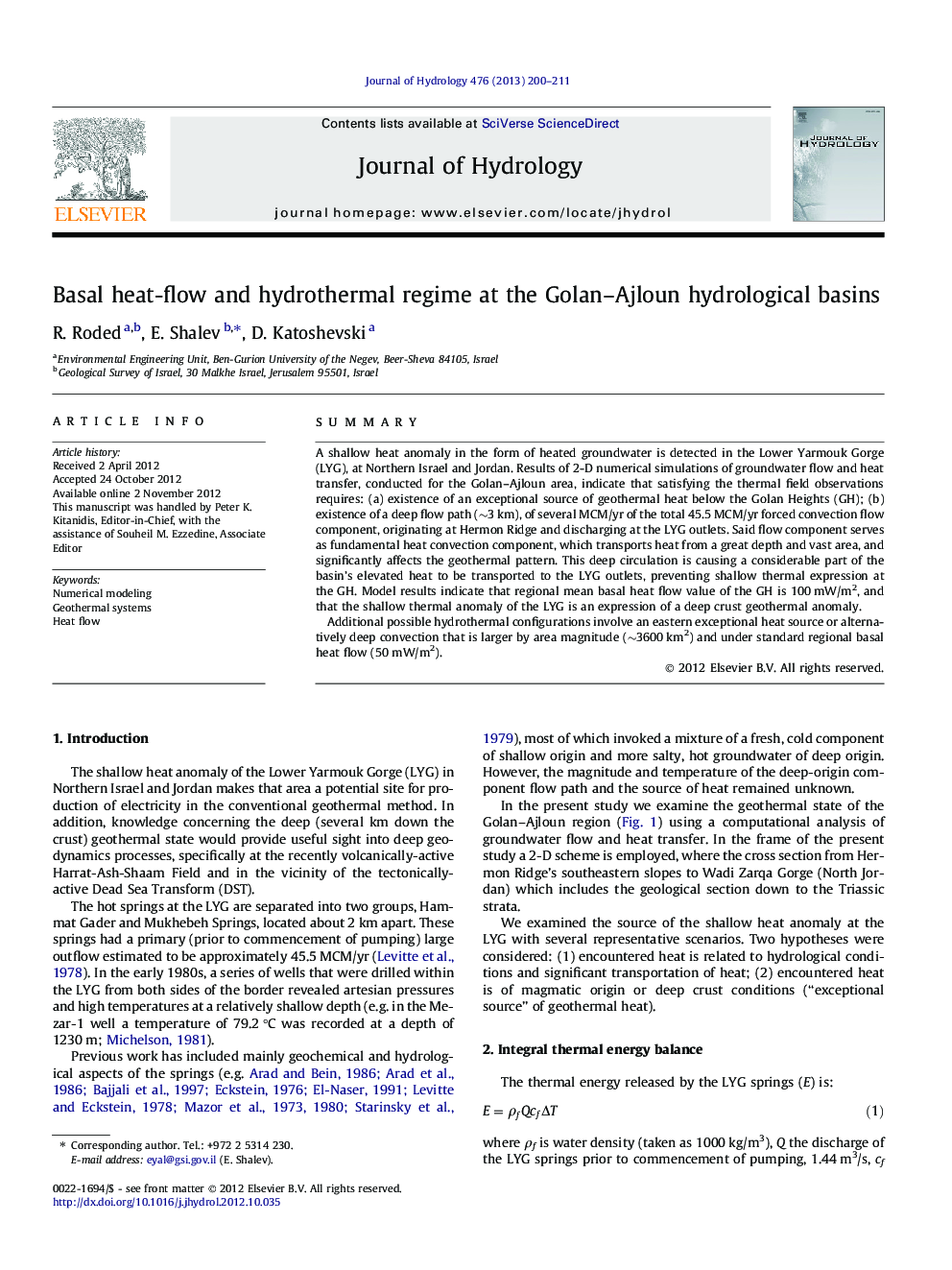| Article ID | Journal | Published Year | Pages | File Type |
|---|---|---|---|---|
| 4576611 | Journal of Hydrology | 2013 | 12 Pages |
SummaryA shallow heat anomaly in the form of heated groundwater is detected in the Lower Yarmouk Gorge (LYG), at Northern Israel and Jordan. Results of 2-D numerical simulations of groundwater flow and heat transfer, conducted for the Golan–Ajloun area, indicate that satisfying the thermal field observations requires: (a) existence of an exceptional source of geothermal heat below the Golan Heights (GH); (b) existence of a deep flow path (∼3 km), of several MCM/yr of the total 45.5 MCM/yr forced convection flow component, originating at Hermon Ridge and discharging at the LYG outlets. Said flow component serves as fundamental heat convection component, which transports heat from a great depth and vast area, and significantly affects the geothermal pattern. This deep circulation is causing a considerable part of the basin’s elevated heat to be transported to the LYG outlets, preventing shallow thermal expression at the GH. Model results indicate that regional mean basal heat flow value of the GH is 100 mW/m2, and that the shallow thermal anomaly of the LYG is an expression of a deep crust geothermal anomaly.Additional possible hydrothermal configurations involve an eastern exceptional heat source or alternatively deep convection that is larger by area magnitude (∼3600 km2) and under standard regional basal heat flow (50 mW/m2).
► Shallow hydrothermal anomaly exists at the geodynamic active Golan–Ajloun area. ► Numerical simulation results show the occurrence of a deep flow path (∼3 km). ► Results also indicate high basal heat-flow under the Golan Heights (∼100 mW/m2). ► The hydrothermal conditions are favorable for geothermal production.
